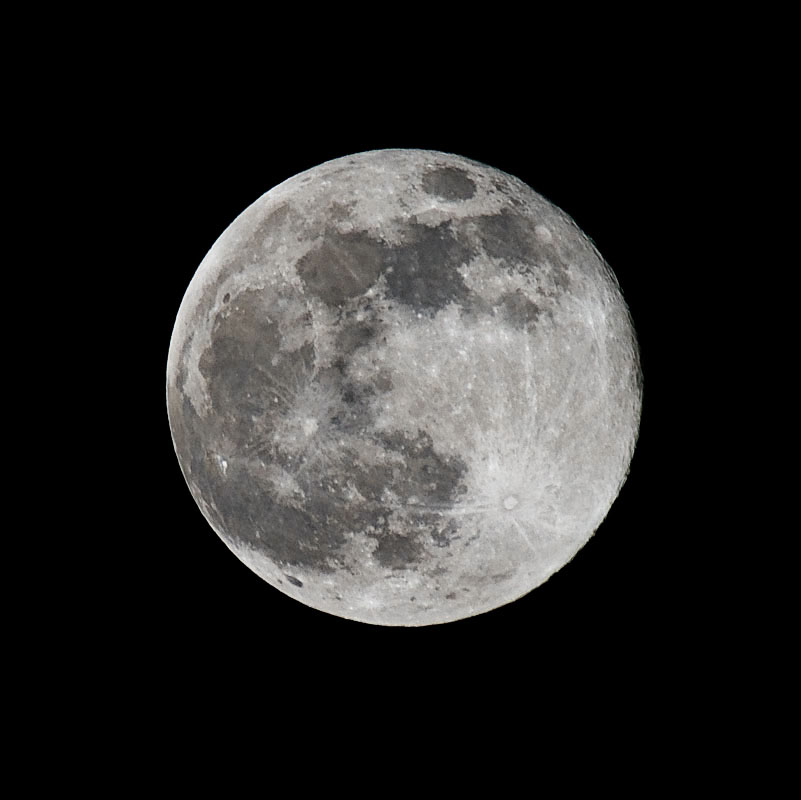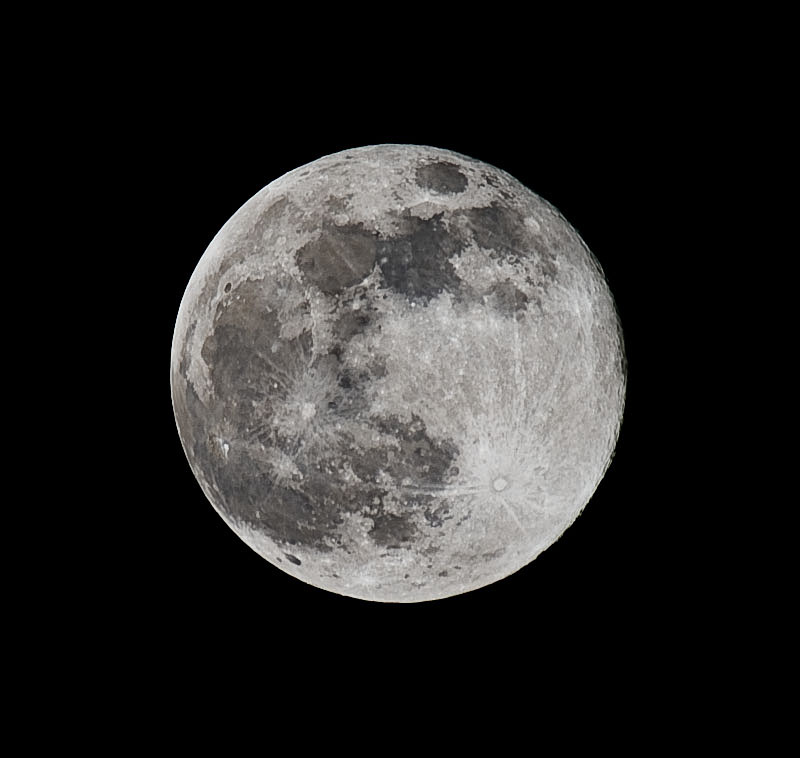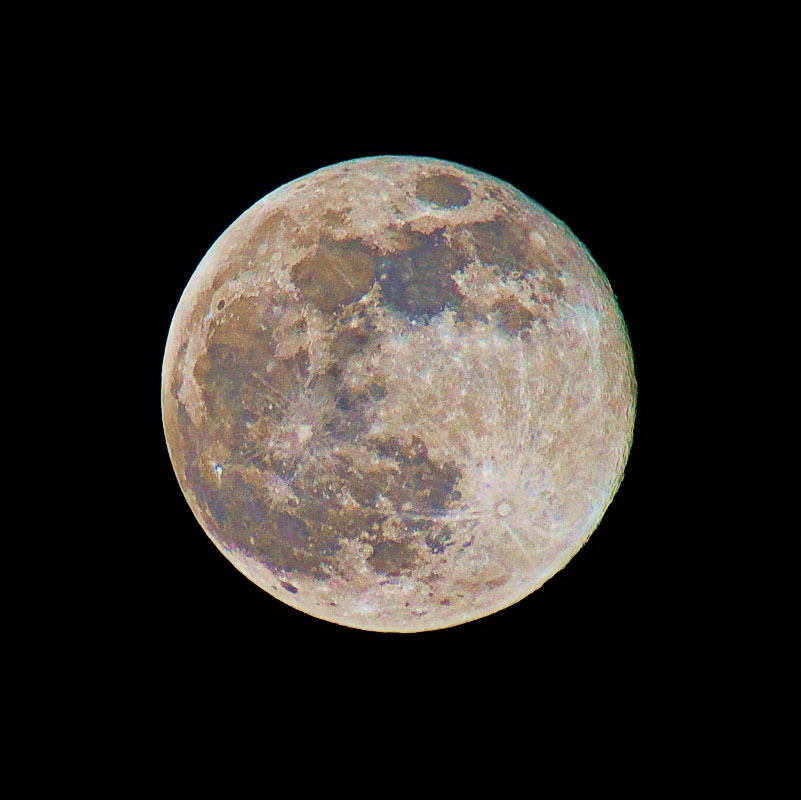Tonight the moon is at its closest approach in quite some time. This perigee is only 118 miles further away than the closest approach in the last 375 years, so this has to qualify as a fairly big event. I noticed the incredible brightness of the moon (apparently 14% brighter than usual) as I drove home tonight. It's also a bit bigger in the sky, although that's rather hard to check :-)
I resolved to photograph it again tonight as I was driving, and right after wolfing down a bowl of cereal (dieting ... that's another story) I gathered my D300, 300mm F4 AFS, and my new Kenko 2x teleconverter. I have tested this teleconverter and found it to be a bit softer than my other one ... but there is more reach so I thought I'd give it a shot.
I wanted to do some fancy automated interval shots, but it was so bitterly cold outside that I chose instead to fire off 6 quick shots at 400 ISO with a high enough shutter speed that the 2 second timer should be enough to get crisp images. Since the shutter was way outside the danger zone (around 1/15s on a tripod), I did not need to deal with mirror slap. The timer handled only residual vibration from touching the camera to start the timer.
Once the six shots were done, I bolted back into the house to thaw my extremities and grabbed the memory card from the camera. I processed one of the images in ACR4 and tweaked it some in CS3 (local contrast, contrast and saturation.) Then downsize and sharpen. I think it came out very nicely.

Then, I thought I'd take all six images (the only images I shot, actually) and stack them. I used the command "file=>scripts=>load files in stack" to get all my RAW files (which had been converted with identical settings in ACR5) into separate layers. Then, I used the command "edit=>align layers" to get all the moons perfectly aligned.
Next, I reduced the opacity of all layers to about 50% and set all layers but the bottom to screen blend. This effectively multiplies only pixels that exist to make them brighter, but cancels random noise, since it will rarely appear in the same place in any two frames. I added a black layer at the bottom of the stack to serve as background, which also helped a great deal in cleaning up the sky.
The screen blends managed to make the moon too bright and the gamma too weak (low contrast), so I added an "exposure" adjustment layer and brought the moon back out with stronger gamma, which began to really accentuate detail.
Next, I performed local contrast work, adjusted the saturation and contrast, and downsized with some sharpening. I should have sharpened more here (the Kenko 2x is a bit soft with this lense) but I saved as jpeg and closed everything up. I was not satisfied when I looked at it in the browser so I committed heresy and loaded the jpg back up into ACR5. Here, I cranked the sharpening pretty hard and much preferred the new look, so that is what I posted. Here is that 6 shot stack:

Unless I am hallucinating, the detail came out really clearly. Looking closely, it has an almost 3D appearance, which is nice on full moon. In my opinion, nothing can really compare with Michael Stecker's image, but this is still a very satisfying result.
Edit: I processed an image from the Fuji Talk Forum taken by an S1000fs ... a nice capture, but suffering from serious jpeg compression artifacts. So much so that there was nothing I could do to keep them from showing in the final image. However, while trying different techniques, I notices that Topaz Denoise was able to smooth the image dramatically and this allowed a lot of extra color information to come out. So I thought perhaps that I could try the same thing on one of these images. Turns out it didn't work ... at 400 ISO the D300 doesn't produce enough noise for Topaz to even see. However, I then thought I'd try Topaz Adjust and let it play with the color. I used the preset "mild color pop" and did it ever! This is nothing compared with Michael's image linked above, but it it getting very interesting nonetheless ...

No comments:
Post a Comment